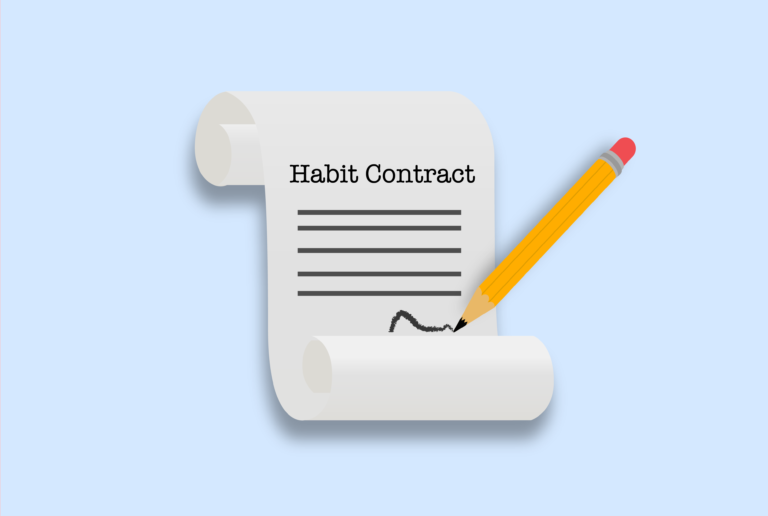Habit Contract
-
officialhogi

When I was young, I did some tremendous dumb stuff and often enough, I learned through these experiences.
Like drinking boiling hot tea, biking on thin iced rivers and more.
And what I have learned from this is that pain is often a very effective teacher.
It taught me that;
“The worse the pain is, the faster you will learn from the experience.”
However, I never imagined in my life that you can use pain or punishment as a method for making and breaking a habit.
Until I read atomic habits. In the book, James Clear explains the theory of habit contract.
A habit contract is a way to increase the speed of the punishment for doing a bad habit or for not committing to a particular habit.
Often enough, we don’t see any direct impact on slacking and therefore we tend to loosen up.
By creating a habit contract, you hold yourself accountable. However, this only works if the failure is painful.
If it isn’t painful you wouldn’t learn from it. So, make it painful in the moment.
And, what does a habit contract entail?
Well, a habit contract is an agreement between you and your accountability partner.
If you don’t commit to the habit you will be punished.
Often, the punishment involves a lot of money.
But it doesn’t always have to involve money.
Customer reviews, for instance, are a way to keep businesses in check because the threat of bad reviews outweighs delivering poor services and goods.
So, the key takeaway for creating punishment is to make the consequence severe.
And your accountability partner keeps you in check.
Habit tracking might be a useful method to hold yourself accountable but there is a catch.
When you use the habit tracking method your sole purpose is to show up to the habit. So, the focus is driven by the numbers instead of the purpose behind a habit.
Just as work.
We tend to focus on the hours of work instead of getting meaningful work done.
This is also referred to as Goodhart’s Law;
“When a measure becomes a target, it ceases to be a good measure.”
So, use the habit tracking method with care and as a guide to your goal but don’t get driven by the numbers.
If you want to get meaningful work done then I would recommend you to read the 80/20 principle.